Upscale Prius Flashes Style, AWD, Great Economy
Filed under: Weekly test drives, Autos
By John Gilbert
When Toyota and Honda led the way into hybrid engineering, I was impressed to track their different techniques to combine electric motors with gasoline engines. Some resisted, and I realized I was risking my status as a card-carrying purist, but it was immediately apparent that hybrids were the stepping stone to what is surely a coming era of electric cars.
While Honda wavered a bit along the way, and other competitors from South Korea and Germany have emerged, the Toyota Prius has remained the vanguard. Toyota’s “Hybrid Synergy Drive” has powered the subcompact Prius to such popular status that some feel it has become the new icon for Toyota’s worldwide success, even replacing the Camry and Corolla as the company’s signature vehicle.
Consistency is Toyota’s hallmark, and it is the reason for the everlasting success of the midsize Camry and compact Corolla, but the Prius has countered that reputation, taking some chances with edgy styling and staying at the top of the technology game being played at the highest level of automotives.
Prius now has expanded to a diversified portfolio with different models and styles, and the standard front-wheel-drive models continue to show increasing fuel economy. Their consistency may have left some cynics behind, but amid competitive hybrid models from Honda, Hyundai and German competitors and assorted all-electric cars, there are reasons to take a new look at the Prius.
I have just had the opportunity to test a 2019 Prius Limited, the top of the line hatchback 4-door sedan with all-wheel drive. Interesting. The electric-motor-powered front-drive Priuses have perfected the ability to turn gas-engine power and regenerative braking into keeping the battery-pack electric motors going, but all-wheel drive seems a stretch.
Turns out, the 1.8-liter 4-cylinder engine is not tuned for highest power but to be efficiently coordinated with the electric motors, so its listed 121 horsepower doesn’t mean much. The test vehicle had performance-vehicle takeoff and swift highway operation.
The car was Supersonic Red, one of two new colors exclusive to Prius, and it practically glowed with brightness. It also has the wedge, fast-sloping arrow shape in silhouette, rising from a low nose and fitting well into the various contours that end up at the well-sculptured rear. The hatch has a huge window, which extends below the rear deck spoiler wing, which aids rear visibility greatly.
Front visibility for the driver is enhanced by the now-familiar positioning of the instruments and information screens on a centrally located region of the dashboard. That means without the speedometer binnacle, the driver looks straight down at the road ahead, with a head-up display.
Wrangler Keeps Changing, but Stays the Same
Filed under: Weekly test drives, Autos
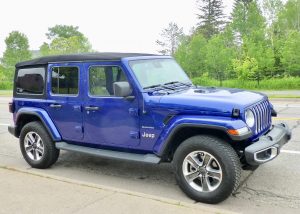
Same familiar look, but the new Jeep Wrangler has considerable refinement beneath the stunning blue paint.
By John Gilbert
It’s been quite a model year for FCA already. FCA, of course, stands for Fiat Chrysler Automobiles, and it encompasses the Italian parent Fiat, along with what used to be Chrysler Corporation — Chrysler, Dodge, Jeep and Ram — blended into Fiat and its impressive holdings, Ferrari, Alfa Romeo, Lancia, and, of course, Fiat.
Thanks to Ram and Jeep, FCA has seemed to have withstood the current woes plaguing the global auto industry, in which cars are in the downward stroke of the vehicle-buying pendulum, headed for what many executives at General Motors and Ford see as oblivion, displaced by the upsurge of trucks — all manner of trucks and SUVs, which have zoomed past cars in popularity and profitability.
Ford has declared it will stop building almost all cars — Taurus, Fusion, Focus, Escort, you name it — to make room for building more trucks. GM says the same thing, planning to eliminate all sorts of historically significant vehicle nameplates in order to convert plants from cars to trucks, trucks and more trucks.
It’s the same with Toyota, which is even now changing over a plant that builds Corolla compacts to accommodated building more RAV4 crossover SUVs — now the top nameplate at Toyota, even outselling Camry and Corolla.
FCA has not ignored the trend, and is eliminating a few cars, although it has fewer cars than Ford or GM. It sounds as though the Charger and Challenger will remain, but parent and dutiful owner Fiat is watching closely and pulling the strings. Ram trucks, and the amazing Jeep line of utility vehicles have carried the corporation’s stabilization.
The Ford F150 pickup remains the top-selling vehicle in the U.S., but has leveled off, and the traditional runner-up, the Chevrolet Silverado, has fallen off even more in their annual duel of full-size trucks. Despite the tiresome late-night and sports-event ad campaign coming at you with alleged “real people, not actors” who rave about how much more they love the Chevy truck — including one that says, “I traded my Ram for a Silverado” — one of the more startling bits of information is the current marketplace results.
With a classy redesign and an amazingly attractive interior, word out of Detroit was that the Ram outsold the Silverado almost 2-to-1 in the month of June, something I found hard to believe, based on habitual U.S. buyers and their knee-jerk habits.
All of which brings us to today’s topic, which is: Jeep.
While the auto industry has struggled for most of this model year, FCA has improved its total foothold, thanks to the Ram and the Jeeps. The Challenger and Charger remain high-performance muscle-car throwbacks, and the Pacifica minivans, improved though they are with their latest hybrid models, have dropped off a bit and FCA is thinking about adding a renewed Caravan or Voyager base minivan that could sell for less than the high-tech Pacifica.
Jeep, meanwhile, stands alone as one of the most interesting and curious brands. It has some very impressive new family models, such as the Grand Cherokee, the Cherokee, the Compass and the compact Renegade, but the backbone of the whole Jeep line is the Wrangler — the basic, off-road specialist that has been refined thoroughly and repeatedly to become more “civilized” but without losing any of its quite-amazing off-road capability. And you can’t get more civilized than the flashy blue paint on my test Wrangler.
The Wrangler proved it is refined to the point where, amid dozens of compact SUVs taking over the marketplace, Motor Trend tested 20 or more and named the new Wrangler as its “SUV of the Year” for 2019. Incidentally, Motor Trend recently decided to add a third candidate evaluation with SUVs added to the traditional car and truck of the year listings, and the Ram was named Truck of the Year, giving FCA two of the exalted three awards.
I wouldn’t have named the Wrangler SUV of the year in the face of some overwhelming and impressive competition, although when competition gets so tough, it’s understandable why Motor Trend every once in a while clears the air by naming something like the off-roading specialty Wrangler. I am completely impressed with the Wrangler, and those who spend any recreational time off-roading will celebrate the award.
Recently, I had the chance to revisit the 2019 Wrangler, and a mid-summer test week verified my earlier findings that the 2019 Wrangler has made that giant step up to become a worthy family vehicle, with the elimination of the pogo-stick bounciness that I thought was standard equipment on Wranglers.
You could safely say that the Wrangler has made a positive change in -road onrefinement without giving up any of its traditional and historic capabilities off-road. Besides, it’s absolutely cool.
My test vehicle’s biggest obstacle was its name. It was the Jeep Wrangler Unlimited, and indication that it is equipped for heavy-duty use. It was the Unlimited’s elite Sahara model, which means fancier features that shouldn’t prevent it from bounding over the Sahara Desert’s sand dunes like the old television series “Rat Patrol,” which made World War II Jeeps its central figures. And it was “Trail Rated,” which means it is built to go anywhere, whether there are roads or not.
That’s it: The 2019 Jeep Wrangler Unlimited Sahara 4X4, Trail Rated.” But when you want to bring all those subtitles into the spotlight, so the guy parked next to you at the ballgame won’t think you have just an ordinary Jeep, you get silver badges that say “Jeep” in familiar bold type, and above that a smaller “Sahara,” and above that a round emblem that denotes the “Trail Rated” capability.
Fortunately, there was no available room to add to the price tag, either: $52,210. That’s up from the base price of $38,395, and reflects the addition of all sorts of modern conveniences, such as the back-up camera, the third generation Dana rear axle over the heavy-duty suspension with its gas-charged shocks, skid plates and shields protecting the fuel tank, the transmission and the transfer case, a trailer-sway damping feature, electronic stability control and roll mitigation, security device, and, it says here, universal garage door opener.
Those are standard on this model, and there are options added on, including: leather trimmed seats with “Sahara” embossed, cold weather package with heated seats and steering wheel, remote start, LED reflector headlights, foglights, taillights and daytime running lights, a premium audio system, rear park-assist, blind-spot detection, hill-descent control, and full frontal collision avoidance. Oh yeah, and there’s satellite radio, push-button start, and a GPS that plays out on a center stack screen.
You think those Rat Patrol ruffians might have enjoyed those features?
It was blue, but hardly a garden-variety blue. Named “Ocean Blue Metallic Clearcoat,” that moniker falls short of defining the stunningly deep blue that penetrates your senses like a laser-beam.
Among the selections you are required to make is with the engine. There is, you should know, still another upgrade, to the “Rubicon” model, which includes the 3.6-liter V6 engine, although I am convinced the way to buy the Wrangler is with the new 2.0-liter 4-cylinder I had in the tester.
Consider these facts: The 3.6 V6 has 285 horsepower to the 2.0’s 270; but the V6’s healthy 260 foot-pounds of torque can’t beat the 2.0’s 295 foot-pounds. The V6 has a 6-speed automatic, the 2.0 gets the new 8-speed.
The lighter 4-cylinder also aids the Wrangler’s agility, with improved balance, although both, of course, have part-time 4-wheel drive that can be locked into your choice of settings. When on the road, you probably would choose the rear-wheel-drive only setting to aid fuel economy, and be impressed with something approaching sporty car handling.
Those who have driven or ridden in Wranglers from a decade or two ago might still recall how potent it is in clamoring over rocks and hilly terrain, seemingly without regard to how steep the challenge might be. If your experience with Jeeps is more contemporary, as in the luxurious Grand Cherokee, then you might look on the Wrangler with scorn, assuming it to be primitive.
Never, however, assume. The new Wrangler Whatsitsname will still do everything the old off-road-beating, rugged rock climber will do, but now it cleans up to transport you and your family to the country club. It even has a partial soft-top to turn it into a virtual convertible. We won’t get into removing the doors and leaving the rollbar -quality support structure exposed as you bound off-road.
I still don’t know that I would name it SUV of the Year, but I’m pretty sure that if and when you choose an alternative vehicle for that honor, the Wrangler will beat it off the road, and maybe on the road, too.
Golf SE Can Avoid All the Potholes — Almost
Filed under: Weekly test drives, Features, Autos
By John Gilbert
The annual complaints from Northern Tier U.S auto drivers drivers about the horrible condition of streets and highways has reached a pinnacle this year. We can blame Climate Change, or Global Warming, but a particularly long and tough winter of alternating freezing and mild temperatures has caused countless chunks of pavement to break, buckle and otherwise abandon their intended resting places, leaving nasty traps waiting to ambush unsuspecting tires, wheels and suspensiuon parts.
My city, Duluth, Minnesota, is, I submit, deserving of a nomination for the worst, and who can deny or judge it? I enjoy driving and reporting on an assortment of new vehicles every week to report on them, and I seek out varied real-world roadways to check on the steering and suspension of all these vehicles. But I certainly did not want a close-up and personal validation of my opinions of road conditions.
Out of familiarity with the roads that I travel most frequently, and so it was as I drove a 2019 Volkswagen Golf SE 1.4-turbo for a week recently. I had driven various VW Golf models, including the GTI, Golf R, and reported on a Golf SE with a stick shift during a minus-35-actual stretch of Minnesota winter. And while not trying to overdo it with repetitious reviews, this is supposedly the final year that we will get the tried-and-true Golf models in U.S. showrooms, which I have declared a sad thing; we’ll enjoy getting the GTI and Golf R, but the base car — the SE — is special on its own. It comes with VW’s newest engine, a 1.4-liter four-cylinder from a whole new engine family, bolstered by a turbocharger to extract surprising power from such a small engine.
The test car has a base price of $25,245, and a sticker of $27,435 as equipped. With only 147 horsepower, its 1.4 lacks the power of the corporate 1.8 or 2.0, but it has abundant torque, which peaks at 184 foot-pounds at a mere 1,400 RPMs — more than the bigger engines. This test car, in a medium Silk Blue Metallic paint job with alloy wheels, had an 8-speed automatic with almost-hidden paddle shifters on the steering wheel. So you get beyond the lack of horsepower by downshifting, then running the revs up to the pleasant feeling as the torque comes through.
Golfs always ride well, with supple but moderately firm suspension, which allows even the base car to take turns in a sporty manner. With all the contemporary safety elements built in — electronic stability control, anti-slip regulation, anti-lock brakes with electronic brake assist — the 4-door hatchback Golf is a safe, solid luxury compact that can get more than 38 miles per gallon.
I was able to attain 38.2 mpg in combined city-highway driving, while EPA estimates show 37 highway, and I was over 36 in all-city operation. That’s up there in TDI country, where only the previous turbo-diesel could go.
The 225-45 17-inch Pirelli P7 tires obviously contribute to the excellent handling and smooth ride. So there I was, negotiating the pits and pitfalls of Duluth’s nastiest streets and roads through five days of the week.
The rural highway we live on is a few miles out the North Shore, and as you drive south to join the freeway for the ride into Duluth, you leave the township, with its St. Louis County-maintenance, and enter Duluth’s city limits, where city crews take care of the surface. You don’t need the sign that says “Duluth,” because you can see the white surface, probably concrete, end where it meets the gray asphalt of the city segment.
Without question, the concrete stays amazingly smooth, and the asphalt chunks out in a harsh and irrgular manner. As I drive down on the 55-mph county segment, and slow for the 30 mph residential city rules, I have a practiced routine. The familiar start to the asphalt has re has a couple of modest potholes seem to join hands just to the right of the middle of the road. Being able to see a couple blocks ahead, I generally swing into the oncoming lane until I get past that stretch, then swing back into the right lane.
This time, with my wife, Joan, and older son, Jack, riding with me to meet up with our younger son, Jeff, at the Trampled By Turtles concert at Bayfront Festival Park, I saw a car or two coming toward us. I had to abandon my normal plan, so I chose to straddle the rough patch or go wide right. I chose to go wide right.
Ka-Chonk! My right front absorbed a rugged hit. Turns out, when I swung wide right to miss the moderate but annoying potholes I was aware of, my right front struck a fourth pothole 10 yards ahead that I was not aware of. It was a long and deep pit. As the blow reverberated, I continued driving, feeling nothing out of sorts, and it was with great relief that no serious damage could be detected.
I pulled onto the freeway and got up to the 65 mph speed limit without any hesitation or vibration, but after about a mile, a little warning sign came on the instrument panel: “Air loss detected in right front tire.” I slowed down immediately, cursing the bad luck, but I couldn’t pull off immediately because of a narrow shoulder. By the time I could, I felt the pull of the deflated tire. Sure enough, the impact of the tire striking what amounted to the far cliff of the Grand Canyon not only blasted a hole in the tire’s sidewall, it scratched up the flashy alloy wheel a bit, too,
It was impressive that the Pirelli P7 took the blow and held its integrity for a mile or so, and it was more impressive that the tire-sensor relayed such quick and accurate information.
With Jack as lead pit-crew guy, we changed it for the space-saver spare, and I drove gingerly the rest of the night and on to Sunday. The timing of my test-drive, though, was to end when the Chicago fleet delivery guys would pick up the Golf SE at 11 a.m. Monday and drive back to Chicago.
We didn’t want them driving that far on the space-saver, so I called Volkswagen of Duluth early Monday morning, explained what had happened, and inquired about their supply of P7s. They had four in stock, they said. When I got there, however, we realized that they were from a year-old supply and the new one was an inch larger, at 17. We talked it over, and I asked if they might have exactly the same SE model on their lot, and they did. Service manager Calvin Edel summoned the unsold car and his service crew did a quick remounting job.
Just to make sure there would be no imbalance, they put the new tire on the right rear and rotated the right rear to right front. Good move. I made it home about an hour before the drivers showed up, and they appreciated the quick and efficient work of Volkswagen of Duluth.
That VW dealership, by the way, is primarily responsible for recalibrating and legalizing almost all the many recalled Golf, Jetta and Passat TDI models to bring their turbo-diesel engines into full compliance, before being sent to dealers throughout the Upper Midwest, where they represented one of the great car values of our time. That’s impressive, especially if they do as thorough a job as they did changing and remounting that tire for the Golf SE.
The caution with which we take on the Pothole Obstacle Course driving through Duluth has been amplified. We’ve got some potholes this year that, to be fair, should register on the nav screen’s GPS.
Golf R Could Be Named ‘Golf RRRRRR’
Filed under: Weekly test drives, Features, Autos
By John Gilbert
Volkswagen is a difficult target to follow these days, coming out with new vehicles and new engines that give the German automaker a definite step up from most competitors. One seemingly dizzying move is the announcement that Volkswagen will keep selling the Jetta compact, and the Passat, its new Arteon luxury midsize sedan, as well as its wagons and SUVs, but it will stop sending its iconic Golf hatchback to the United States.
Well, almost. The spectacular Golf R that I recently tested for a week along the North Shore of Lake Superior is unquestionably based on the Golf, and thankfully, it will keep coming to U.S. showrooms, along with the GTI. But the base Golfs will be made for sale elsewhere only.
To Volkswagen, it’s not a puzzle. The Golf outsells the Jetta in every country of the world where both are sold, except the U.S. Our buyers became convinced they didn’t want small hatchbacks anymore, and we buy many more Jettas than Golfs, so the Golf is simply being eliminated from our future.
The asterisk is that Volkswagen has allowed it will bring in two specialty Golf models, the GTI and the Golf R. That, too, makes economic sense because the high-performance GTI and the even higher-performance Golf R account for something like 46 percent of all Golf sales in the U.S.
Despite the opportunity to be blown away by my week-long road test of a new 2019 Golf R in a new slate-grey color, I am disappointed to hear of the decision on the other Golfs. The GTI is, of course, the icon of all “hot hatches” and outruns the standard Golf with ease, but the basic Golf now comes with VW’s 1.4-liter turbo four-cylinder engine that is part of a new and different engine family than the 2.0 or 1.8 fours.
The 1.4 turbo powers the Jetta, and it only recently has migrated into the base Golf as well. I wrote about testing a base 1.4-turbo Golf in minus-30-degree January weather this past winter. It has plenty of power with the turbo and can push out amazing amounts of torque, and despite what the big-time magazines such as Motor Trend or Car & Driver say about needing more power and faster acceleration from everything they test, the 1.4 has at least adequate in performance, and is a fun way to achieve 40-plus miles per gallon.
But I digress.
The GTI set the standard for fun and high-performance handling and power and has maintained that stature since the 1970s. Volkswagen kept making subtle refinements without ever losing the flat handling and solid performance in the tweaked front-wheel-drive GTI hatchback. It was distinctive in autocross competition and road-racing for hoisting its inside rear wheel in a tight turn, evidence of how stiff the platform was.
Suggesting improvements for the GTI seemed like heresy, but VW has done it, with an under-publicized, under-rated and mostly under-appreciated Golf R. The 2019 Golf R shares the 2.0-liter dual-overhead cam four with the GTI, but it gets a power tweak in the R, up to 292 horsepower and 280 foot -pounds of torque.
That power is distributed to all four wheels in VW’s 4-Motion concept, and a 6-speed stick helps make the 4-door (only) hatchback stick. There will be no rear-wheel lifting in this one. It is too well-planted with the power going to all four wheels, and it is not likely you will ever screech the tires taking off, even if you try to. And why would you?
The test vehicle comes in at a bit over $43,000, and if that seems like a lot for a Golf, consider that it will go through anything, and handle with the same agile stability as the GTI, only better. And it should make the hillside-scaling in Duluth winters a joy rather than treacherous.
The 4-door form does nothing to lessen the sportiness of the R from the traditional 2-door coupe. and it adds convenience to rear occupants. First impression was stunning, because the color is a unique slate gray, which is flat compared to the various high-metallic shades of grey everybody seems to favor. Various other companies including Toyota and Honda also have recently tried a flat grey and it’s always eye-catching.
This one stands out because its distinctive color was set off by a set of black, 19-inch alloy wheels, making the high-performance Continental ContiSport Contact tires look like part of the wheels, and the all-black tire-wheel combination contrasts sharply and amplifies the car color. A tiny silver “R” adorns the grille, and any other special package indications are scarce, except for the four exhaust tailpipes that at least let you know that something special just blew by you.
I was able to get up and over 30-miles per gallon with the R when driving it conservatively, but it is a chore to resist running the revs up in second and third gears, which put you right up there in risk territory for any speed limit. Those revs rise steadily and smoothly, which also describes the way the Golf R handles the tightest turns, turning cloverleafs into highlights and making you wish for a chicane or two on your nearest interstate system.
The highlight of the auto industry ad business these days is the compelling new prime-time Volkswagen commercial, set to the “Sound of Silence” classic by Simon and Garfunkel. Great song, and a fantastic ad, because it shows an engineer getting up in the dark of night to walk through the darkened house to his design bench, where he’s drawing up a stunning new version of the Microbus — VW’s stodgy but lovable Woodstock-era van from the 1960s.
Only there’s nothing stodgy about the new van, with its dramatic snub-nosed styling, only hinted at in the commercial. Reviewers have claimed that the ad shows that Volkswagen is still trying to apologize for the diesel scandal of the past decade, whereby software in Volkswagen diesels ingeniously restricted emissions when being tested, but violated standards when running free.
We must always add the footnote that virtually every other company on the face of the earth that builds a diesel engine also has had similar problems, although they have been kept much quieter, suspiciously allowing General Motors, Ford, FCA, Mercedes and others to stay safely below the “scandal” threshold stamped on Volkswagen. Most of those are larger trucks, and the high-mileage Golf TDIs were so plentiful that the company has pretty much stopped building diesels — at least for the U.S.
There have been enough apologies, and hefty fines, and VW has proven capable of building a whole new fleet of exceptional cars with small, turbocharged gas engines. To criticize the critics, there are other reasons that ad is a clever look into the future. The opening line, “Hello darkness, my old friend,” fits the nighttime theme, and the closing line, which reiterates the phrase “…the sound, of silence,” as we are shown an outline of the new VW “bus” head-on. Hmmm…let’s see now. What is silent while running, but shines brightly in the night? How about an all-electric vehicle?
Car folks might know far better than ad critics that the new version of the Microbus shown at all the major car shows for two years now, and coming soon, will be all-electric. And thus it becomes an old friend reborning, and running silently.
Meantime, Volkswagen is putting the finishing touches on its all-electric Golf, called the e-Golf, which will definitely prove that VW is headed down the cleanest of clean-air paths. It will be silent, it won’t require any gasoline, and it may lead the way, along with the Microbus, for an entire new direction for VW.
But pardon me if I engage in a little pre-nostalgia: Give us your best electric-motor technology, give us that Microbus, but please, don’t take away our Golf R!
Pacifica Leads Minivan Resurgence with Hybrid Tech
Filed under: Weekly test drives, Autos
By John Gilbert
Picture yourself driving along any scenic and winding highway. In my case, it’s revisiting Highway 61 on the North Shore of Lake Superior. The drive is effortless, allowing you to enjoy a beautiful day while sitting in a comfortably supportive bucket seat, gripping a nice handful of steering wheel. You enter smoothly and then accelerate, just as smoothly, coming out of the curve. The almost silent response of high-tech power is amplified by the stable, well-planted feel of the suspension, and the precise agility of the steering is more imnpressive when you push it a little.
Obviously, you’re driving a sports sedan or maybe even a sports car, with capabilities that reach beyond your demands, particularly with the speed limit in mind.
But no. You are driving a minivan. Come on, minivans are boring, aren’t they?
Well we’re not talking about “just” a minivan. This is the 2019 Chrysler Pacifica, which is the contemporary standard among ultimate family haulers. And this one is one giant step beyond, being the Hybrid Limited model, which detunes the 3.6-liter V6 from its standard duty, and then bolsters that tuning by the potent punch of a hybrid electric system, with a plug-in adaptor.
The result gives the Pacifica Hybrid 260 horsepower of roadworthiness, and until you try one yourself you’ll have to trust me on this: The Pacifica Hybrid takes off with startling acceleration from a stoplight or from the need to pass from normal speed.
The beauty of the Pacifica Hybrid is that if you bought one and didn’t know it was a hybrid, you would simply think you got a more powerful engine than you intended to. The flip side of the usual equation — more power less fuel economy — is that the Pacifica Hybrid can readily attain 30 miles per gallon in combined city-highway driving, with combined gas-electric power.
In my week-long test, where the winding road most covered was Highway 61 along the North Shore Drive of Lake Superior, my recharging consisted entirely of what I could generate from the engine and the regenerative braking energy capture from braking. The test vehicle had two features that I was unable to fully exploit — numerous storage bins in virtually every panel and under the seats for one, and locating the special plug-in adaptor that I could use for the plug-in feature of the hybrid.
When driving a fully charged hybrid, you can drive moderately for a few miles, usually enough to get to work and home again, as well as using the power to augment the gas engine power. When you do plug in the adaptor, you can go from the gas-only mileage estimate of 30 mpg to a whopping 82 miles per gallon using the electric power and gas power. The best part is that if you have 240-volt plug-in, you can get a full charge in two hours.
My inability to find the charging cable no matter how many of the umpteen cubicles and storage bins I searched, was that apparently the last previous journalist who test-drove this vehicle must have kept the cord, because it wasn’t reunited with the Pacifica until the agents from the press-fleet operation in Chicago came to retrieve it. The cable fits into a neat pouch provided for that, and in a bin just inside the hatch on the left wall.
So I got my high of 32 miles per gallon without a fully charged battery pack. My net trick is to coax FCA to send the Pacifica Hybrid for a return engagement so I can see how high I can coax that fuel economy.
As I’ve written many times, in the next few years we will all be changing over to some form of electrified vehicles, ranging from basic hybrids up to plug-ins and on to full electric. There is no need to fight it, or even be reluctant to make the move, because I can only see benefits, with no minus sides.
The test Pacifica was equipped with all the elements that boosted the Pacifica to the highest echelon of the industry, far beyond the grasp of the old Dodge Caravan or Plymouth Voyager, or the upscale Chrysler Town and Country. Those were legendary for their utility and durability, and we probably all know people who put 200,000 miles on a Caravan, then gave it to an offspring or relative who put another 100,000 on it.
The new Pacifica shares those attributes, but with a new and stiff platform it starts out with a stylish exterior, with flowing creases and lines, coming off a stunning and contemporary grille with its headlight enclosures streaming gracefully off that grille. It also has all the current safety and connectivity stuff, like remote start, blindspot and cross-path detection, auto-dimming lights, and such things as stow-and-go second-row seats that fold down and can be tucked into those floor-located storage bins for a flat floor and more storage space.
Also, the option list includes a 760-watt amplifier on the 20-speaker Harmon Kardon audio system, a 360-degree overhead camera view, plus forward collision warning, lane-departure warning, adaptive cruise with stop-and-go shutoff at stoplights, and an amazing parking assist device for both parallel and perpendicular parking — with a stop feature. Some of the first parking assists would park your car without you touching the steering wheel, but after getting you into the parallel parking spot, it wouldn’t brake and would allow your car to cave in the grille of the car parked behind you.
There are other impressive vans out there for competition, mainly the Honda Odyssey and the Toyota Sienna, but none can match the brilliant planning and execution of the Pacifica.
For example, it has a built-in vacuum cleaner, which followed Honda’s lead, but the Pacifica’s device is stashed right near the sliding driver-side door, where it might be most-used. Those sliding doors, and the rear hatch, will operate at the touch on the handle, or by the key-fob, or, with the fob in your pocket, by reaching your foot under the vehicle, which is great for when you’re carrying parcels and especially in foul weather.
The stability of the front-wheel-drive Pacifica is also complemented by keeping your kids, or other passengers, happy and entertained inside. You can haul seven or eight, depending on whether you choose the taller captain’s chairs or the three-seat bench for the second row. First, you slide the door open, flip a switch to tilt the seat forward or tumble it, which allows for easy and even graceful entry to the third row, which will house occupants of any size.
When you’ve filled the van with people, they have the panoramic sunroof to improve their domain, and it has a third pane for the way-back riders, beyond the oversized front sunroof. In the back of the front bucket headrests there are a pair of fold-up video screens, and in the backrest pouch you have wireless headphones. Separate controls allow rear-seat riders two alternatives for videos, DVDs or video games via the Blu-Ray player, which should take care of most of the disagreements kids might have fighting over control or choice of video. As well as putting to rest the “Are we there yet?” questions.
The whole minivan thing seemed to go out of our consciousness a couple decades ago, when families that sought them out to replace the family station wagon from an earlier era, suddenly tired of them and declared them boring and unexciting. That led to the move toward giant SUVs, and I can’t even count the number of times people asked men for advice about what to buy to haul their family with three or four kids, and when I’d suggest a minivan they’d have the same answer: “Oh, I’d never buy a minivan.”
Instead, they would choose an oversized, overpowered, and under-economied SUV and settle for 8 mpg to prove they were “with it.” Through those years, some minivans went out of production, but Chrysler and now FCA have soldiered on, continuing to build the minivans that were bought with an almost embarrassed attitude.
The Pacifica changed all that, and the Odyssey kept pace. Now the new Pacifica, with its hybrid version, sets a new pinnacle. In fact, a month ago, Motor Trend decided to do a novel “head-to-head” competition for best family vehicle. It chose an array of sedans, midsize and compact SUVs, and compared them in tournament-style competition. The Pacifica beat out the Odyssey, and advanced to the “semifinals,” outpointing every other candidate to win the entire thing.
It was probably the most politically correct method for obscuring the upcoming choice, while still selecting the best family-hauling vehicle.
I couldn’t agree more, and the margin of victory grows when you add in the fun-to-drive quotient along with the spirited performance, steering, versatility and the ability to not only take a family trip to visit relatives, but volunteering to take the whole gang out for adventure.


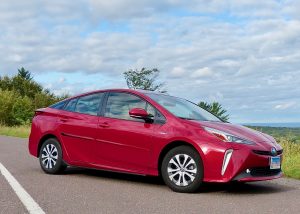
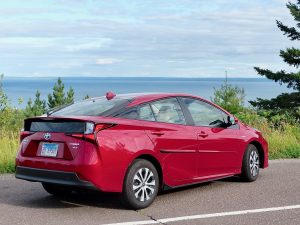
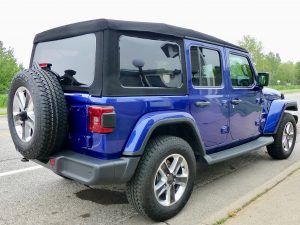
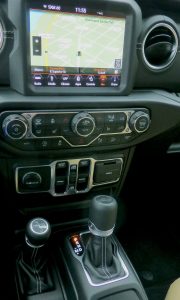
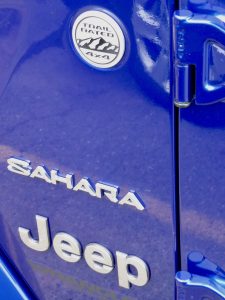
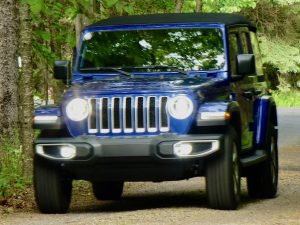
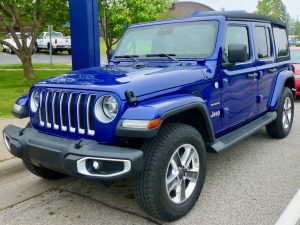
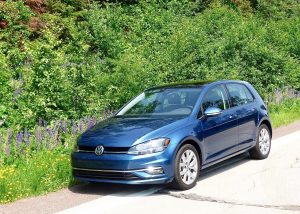
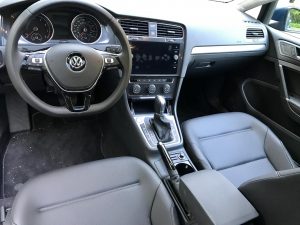
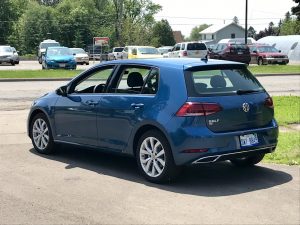
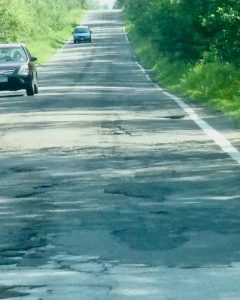


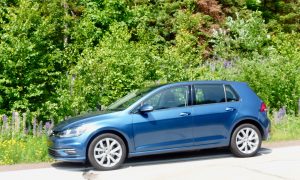
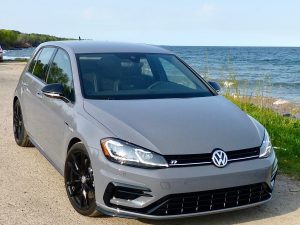
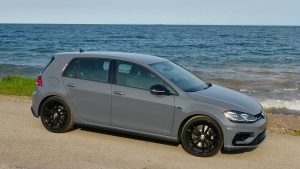
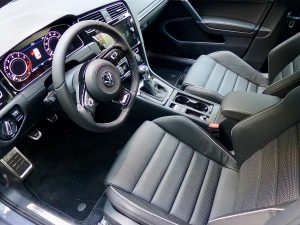
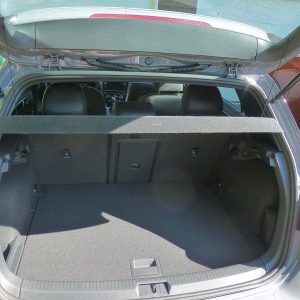
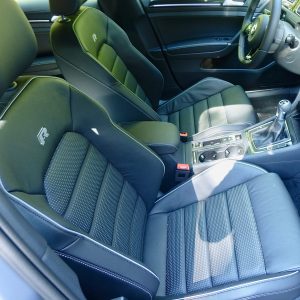

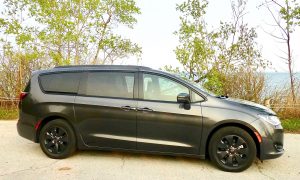
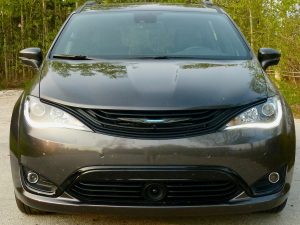
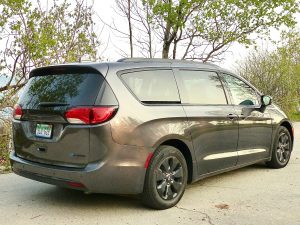
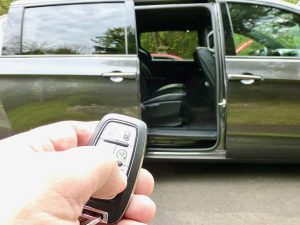

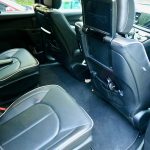
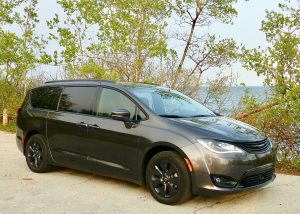
 John Gilbert is a lifetime Minnesotan and career journalist, specializing in cars and sports during and since spending 30 years at the Minneapolis Tribune, now the Star Tribune. More recently, he has continued translating the high-tech world of autos and sharing his passionate insights as a freelance writer/photographer/broadcaster. A member of the prestigious North American Car and Truck of the Year jury since 1993. John can be heard Monday-Friday from 9-11am on 610 KDAL(www.kdal610.com) on the "John Gilbert Show," and writes a column in the Duluth Reader.
John Gilbert is a lifetime Minnesotan and career journalist, specializing in cars and sports during and since spending 30 years at the Minneapolis Tribune, now the Star Tribune. More recently, he has continued translating the high-tech world of autos and sharing his passionate insights as a freelance writer/photographer/broadcaster. A member of the prestigious North American Car and Truck of the Year jury since 1993. John can be heard Monday-Friday from 9-11am on 610 KDAL(www.kdal610.com) on the "John Gilbert Show," and writes a column in the Duluth Reader.